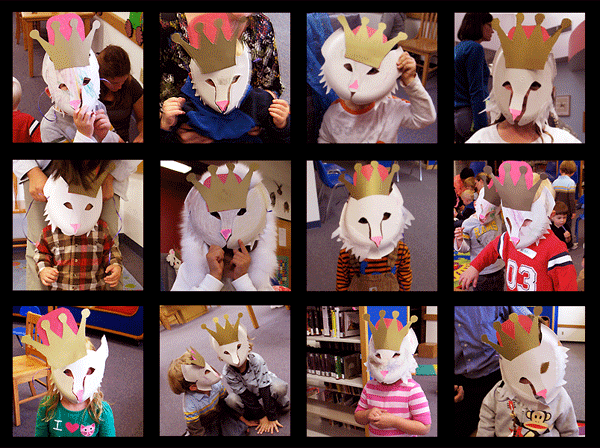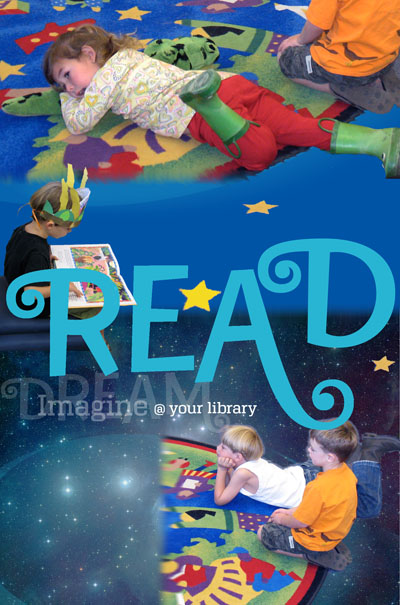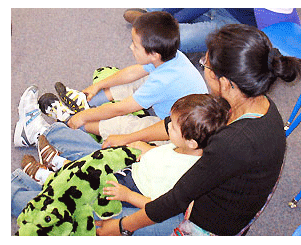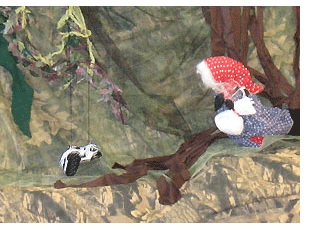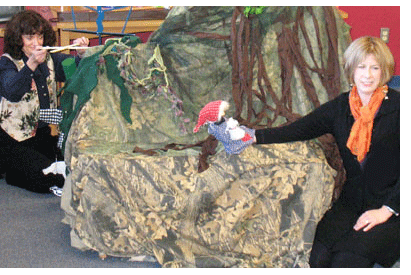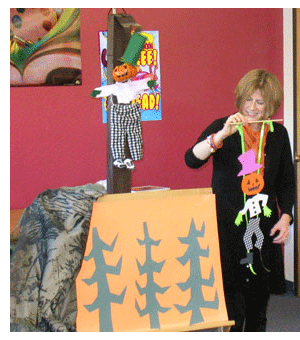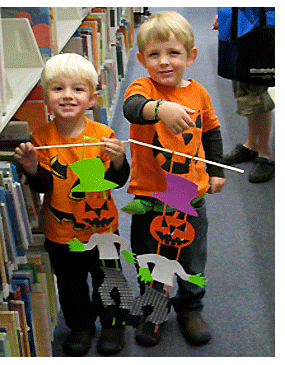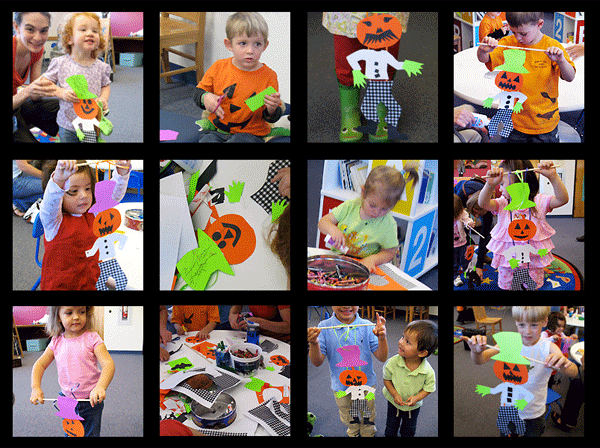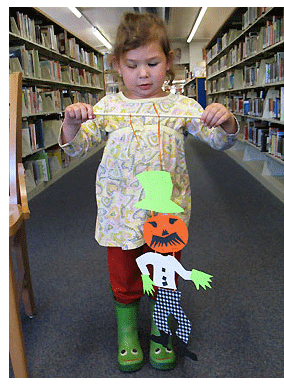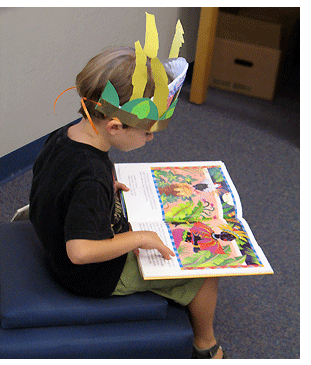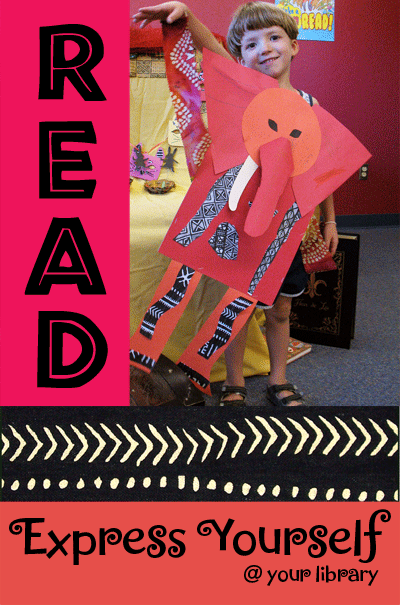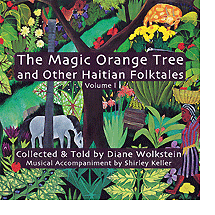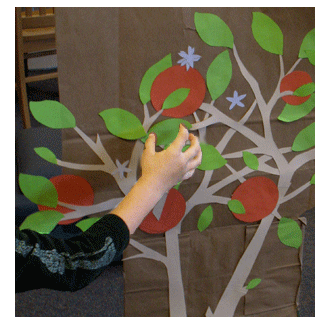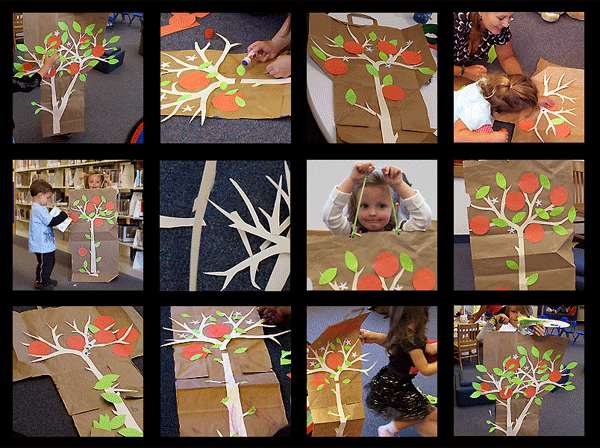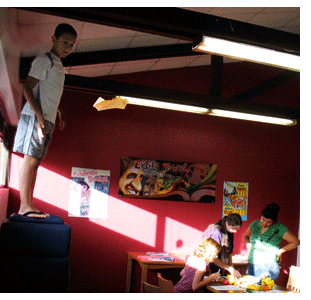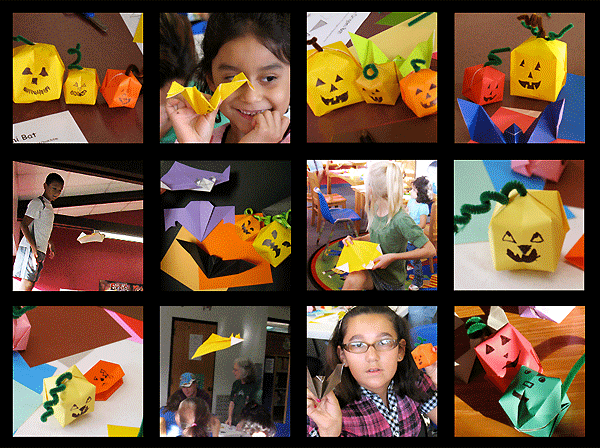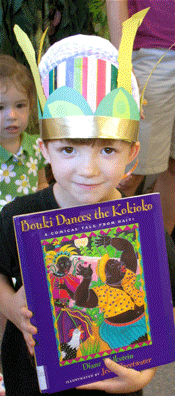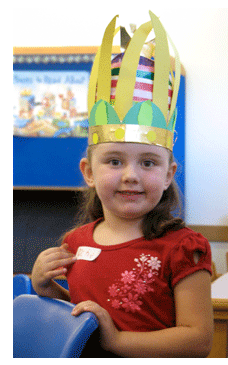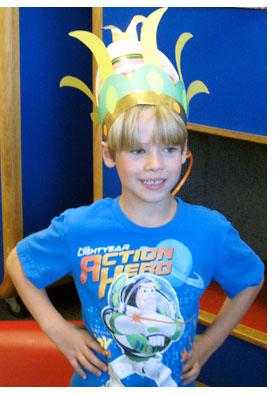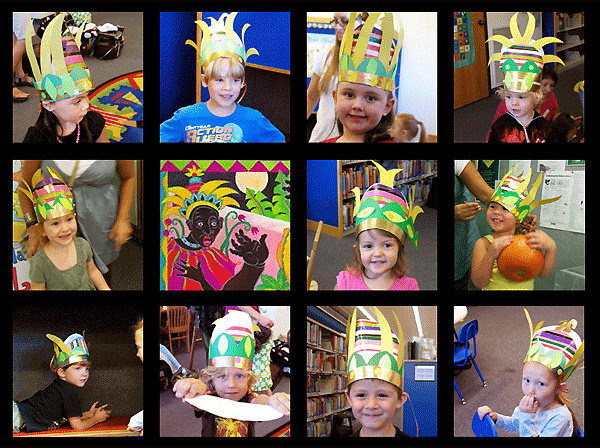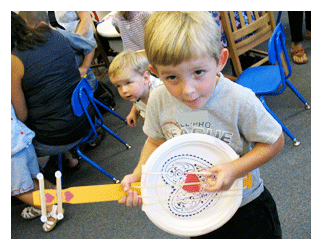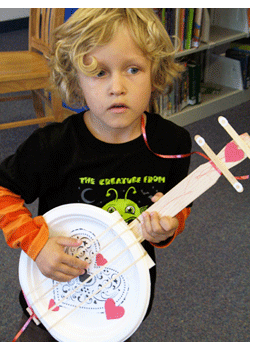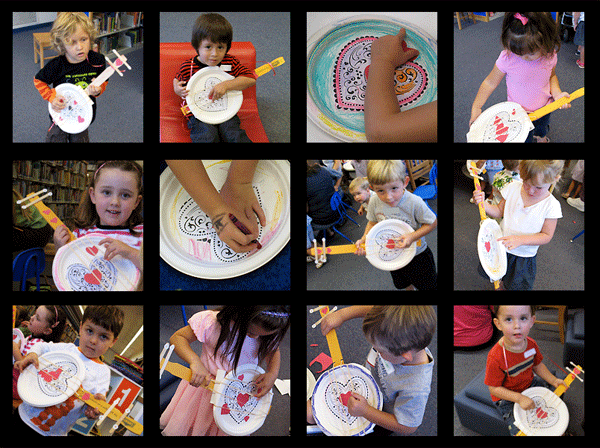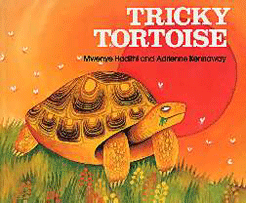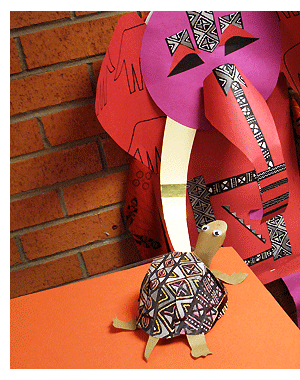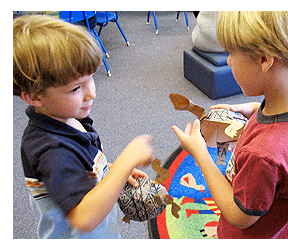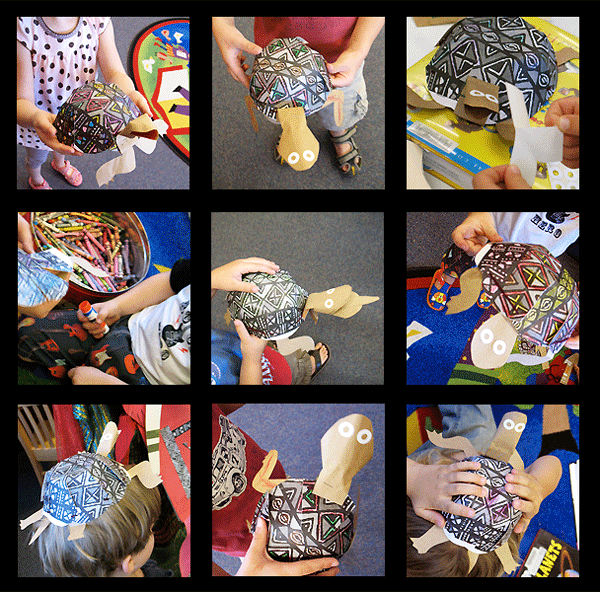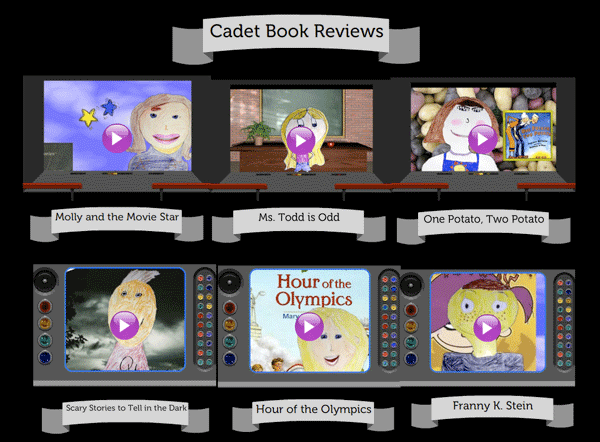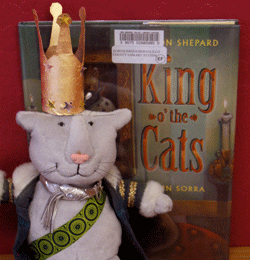 This week I told a Scottish version of Aaron Shepard’s wonderful version of The King o’ the Cats, with a cast of thousands (well, it seemed like thousands!) of kitties and the fantastic help of my colleague and second puppeteer, Amy.
This week I told a Scottish version of Aaron Shepard’s wonderful version of The King o’ the Cats, with a cast of thousands (well, it seemed like thousands!) of kitties and the fantastic help of my colleague and second puppeteer, Amy.
Amy and I both brought a childhood cat hand puppet to join the cast, and Amy also brought her collection of beanbag kitties. Our colleague, Gail, brought her collection of beanbag kitties too!
Matt got everyone in the mood by teaching them steps to dance to the jig, The Loch Ness Monster, by the Whistlebinkies. That was definitely a workout…I had a hard time catching my breath to begin my story!
Young Andrew Black has a reputation for telling whoppers. One night he can’t sleep and gets up in the middle of the night to make a cup of tea. To his astonishment, the kirk is blazing with light. Since he is sexton, he takes his keys and quietly lets himself in. He can hear muffled meows, and the sounds lead him to the nave, which is full of cats sitting upright in the pews like people! There is a richly dressed cat kneeling at the altar, where a bishop cat is solemnly meowing over him. Then an altar kitten brings a red velvet cushion with a golden crown. When the bishop cat sets the crown on the head of the kneeling cat, the congregation breaks into a chorus of joyous meows!
Young Andrew runs straight home, jumps into bed, and pulls the covers over his head! Early the next morning, he tells Father Allen what he has witnessed, but Father Allen warns him not to tell any more whoppers. Only Father Allen’s big white cat, Tom, seems to take an interest.
Later in the day, returning from an errand and taking a shortcut across the fields, Andrew sees the king of the cats and his court riding saddled foxes in pursuit of a Gordon Setter, which they are hunting with bows and arrows. The king’s fox stumbles, and the king falls off and hits his head on a rock. 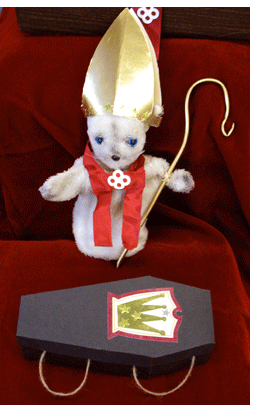 Andrew sees the other cats place the king’s limp body on his fox and then they all ride away.
Andrew sees the other cats place the king’s limp body on his fox and then they all ride away.
Father Allen takes even less interest in this story, but Andrew sees Father Allen’s big cat, Tom, staring at him with interest. Father Allen tells Andrew that there is a grave to be dug, and Andrew gets to work in the graveyard. It is near midnight when Andrew finished digging the grave, and suddenly he hears a rhythmical meowing. Soon a funeral procession approaches, with the pallbearers crying Meow! every third step.
As the cortège draws even with Andrew, the bishop cat raises his paw and calls a halt. Then he turns and speaks directly to Andrew. “Tell Tom Tildrum that Tim Toldrum is dead!” he says. Then he lowers his paw and the cortège passes.
Andrew doesn’t wait for more, but runs straight to Father Allen. As he pours forth this unlikely story, he notices that Father Allen’s cat, Tom, is stretching himself taller and taller. Then Tom speaks!
“Tim Toldrum dead? Then I’m the King o’ the Cats!” And he leaps out the window, never to be seen again.
Well, they say that Father Allen developed quite a reputation for telling tall tales. But it was a bit peculiar: his whoppers were always about his big white cat, Tom…
After the story, everyone had fun making a King o’ the Cats mask.
And there were even some Princess Cats!
{ 0 comments }

